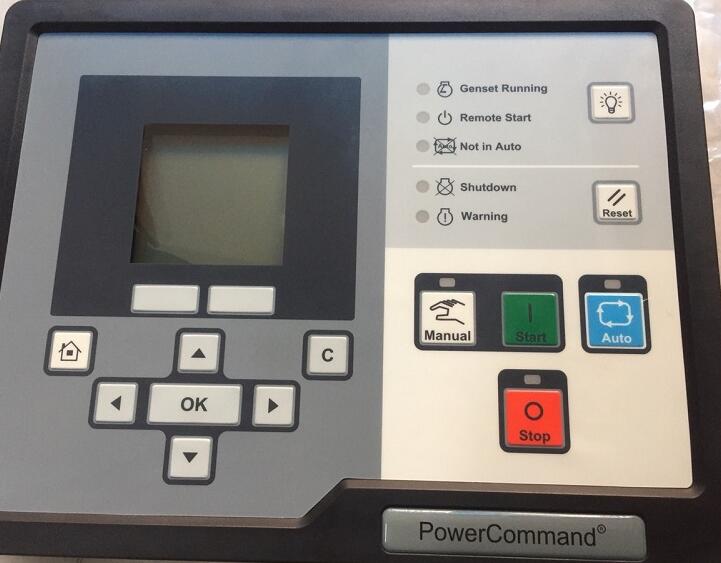Here is the instruction show you guide on how to solve PCC1302 Command fault code 154 intake manifold temperature OOR low warning.Engine intake manifold temperature sensor signal is out of range – shorted low.

Preparations:
2023 InPower V14.5 Pro V12 Diagnostic Software Free Download
PowerCommand Diagnostic 9 Pin Adapter Cable for InPower
Possible Causes:
1. Faulty intake manifold temperature sensor connections
2. Faulty intake manifold temperature sensor
3. Faulty engine harness
4. Faulty extension harness
NOTICE
Part Number 3822758 – Male Deutsch/AMP/Metri-Pack test lead
Part Number 3822917 – Female Deutsch/AMP/Metri-Pack test lead
Diagnosis and Repair:
1 Faulty intake manifold temperature sensor connections
a Inspect the intake manifold temperature sensor and the harness connector pins.
a Disconnect the engine harness connector from the intake manifold temperature sensor.
b Inspect for corroded pins, bent or broken pins, pushed back or expanded pins.
c Inspect for evidence of moisture in or on the connector.
d Inspect for missing or damaged connector seals.
e Inspect for dirt or debris in or on the connector pins.
2 Faulty intake manifold temperature sensor
a Check the resistance of the sensor
a Disconnect the engine harness connector from the intake manifold temperaturesensor.
b Measure the resistance between the intake manifold temperature signal pin and the intake manifold temperature return pin.
c Refer to the troubleshooting and repair manual for the specific engine platform for intake manifold temperature ranges.
b Check for a short circuit to engine block ground.
a Disconnect the engine harness connector from the intake manifold temperaturesensor.
b Measure the resistance from one of the pins of the intake manifold temperature sensor connector to engine block ground. If the resistance is more than 100k ohms, the sensor is operating correctly.
3 Faulty engine harness
a Inspect the engine harness and the extension harness connector pins.
a Disconnect the engine harness from the extension harness.
b Inspect for corroded pins, bent or broken pins, pushed back or expanded pins.
c Inspect for evidence of moisture in or on the connector.
d Inspect for missing or damaged connector seals.
e Inspect for dirt or debris in or on the connector pins.
b Check for a short circuit from pin to pin.
a Disconnect the engine harness connector from the extension harness.
b Disconnect the engine harness from the intake manifold temperature sensor.
c Disconnect the engine harness from all sensors that have a shared return with the intake manifold temperature sensor.
d Measure the resistance from the intake manifold temperature return pin on the engine harness inline connector to all other pins in the engine harness inline connector.
e Measure the resistance from the intake manifold temperature signal pin on the engine harness inline connector to all other pins in the engine harness inline connector.
f If all measurements are greater than 100k Ohms, then the resistance is correct.
c Check for a short circuit to engine block ground.
a Disconnect the extension harness from the engine harness.
b Measure the resistance from the intake manifold temperature signal pin on the extension harness connector to the engine block ground.
c If the measurement is more than 100k ohms, then the resistance is correct.
d Check for an open circuit.
a Disconnect the engine harness connector from the extension harness.
b Disconnect the engine harness from the intake manifold
c Measure the resistance from the intake manifold temperature return pin on the engine harness inline connector to the intake manifold temperature return pin at the engine harness sensor connector.
d Measure the resistance from the intake manifold temperature signal pin on the engine harness inline connector to the intake manifold temperature signal pin at then engine harness sensor connector.
e If the measurement is less than 10 ohms, then the resistance is correct.
4 Faulty extension harness
a Inspect the extension harness.
a Inspect for corroded pins, bent or broken pins, pushed back or expanded pins.
b Inspect for evidence of moisture in or on the connector.
c Inspect for missing or damaged connector seals.
d Inspect for dirt or debris in or on the connector pins.
b Check for a short circuit to engine block ground.
a Disconnect the extension harness from the engine harness.
b Measure the resistance from the intake manifold temperature signal pin on theextension harness connector to engine block ground.
c Measure the resistance from the intake manifold temperature return pin on the extension harness connector to engine block ground.
d If all measurements are greater than 100k ohms, then the resistance is correct.
c Check for a short circuit from pin to pin AUX 105.
a Disconnect the extension harness from the engine harness.
b Measure the resistance from the intake manifold temperature return pin on the extension harness connector to all other pins in the extension harness connector.
c Measure the resistance from the intake manifold temperature signal pin on the extension harness connector to all other pins in the extension harness connector.
d If all measurements are greater than 100k ohms, then the resistance is correct.
d Check for an open circuit.
a Disconnect the extension harness from the engine harness.
b Measure the resistance from the engine oil temperature return pin on the extension harness connector to the engine oil temperature return pin at theextension harness inline connector.
c Measure the resistance from the engine oil temperature signal pin on the extension harness connector to the engine oil temperature signal pin at the extension harness inline connector.
d If the measurement is less than 10 ohms, then the resistance is correct.